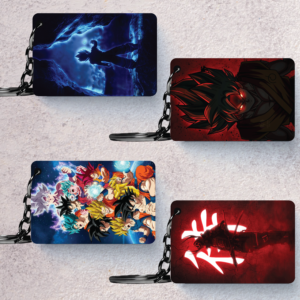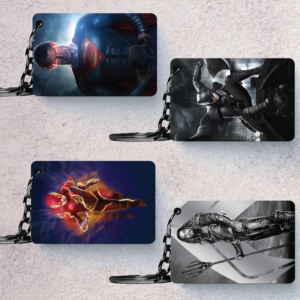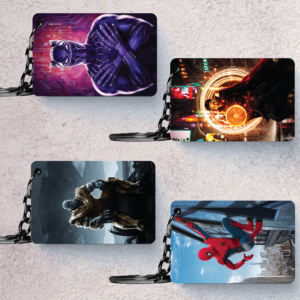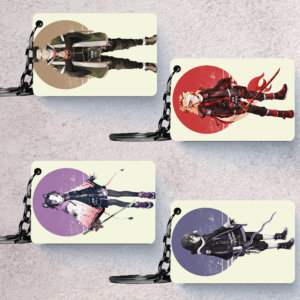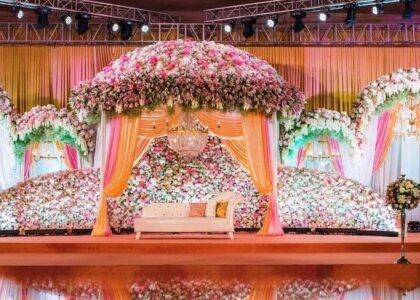Introduction
Wedding dress shopping is one of the most exciting and pivotal parts of wedding planning. It’s a moment many brides dream of, where they can envision themselves walking down the aisle in the perfect gown. But as thrilling as it is, the process can also be overwhelming. From setting a budget to choosing the right dress, there are numerous factors to consider. This guide will walk you through every step, ensuring that your wedding dress shopping experience is as smooth and enjoyable as possible.
Understanding Your Wedding Style
Before diving into the world of wedding dresses, it’s essential to have a clear understanding of your wedding style. Are you planning a beach wedding, a formal black-tie affair, or a rustic outdoor celebration? Your wedding theme will significantly influence the type of dress you choose. A flowing, lightweight gown may be ideal for a beach wedding, while a classic ballgown might be perfect for a traditional church ceremony. Your dress should not only complement the overall theme but also reflect your personality.
Setting a Budget
Setting a budget is one of the most critical steps in wedding dress shopping. Wedding dresses can vary widely in price, and it’s easy to fall in love with a gown that is beyond your means. To avoid any financial stress, decide on a budget before you start shopping and stick to it. Remember to account for additional costs like alterations, accessories, and taxes. Allocating a specific amount for your dress will help narrow down your options and make the shopping process more manageable.
Research and Inspiration
Before stepping foot in a bridal shop, take some time to do your research. Browse through bridal magazines, explore Pinterest boards, and attend bridal shows to gather inspiration. Create a vision board that includes styles, fabrics, and silhouettes you love. This will not only give you a clearer idea of what you’re looking for but will also help the bridal consultant understand your preferences when you start shopping.
Choosing the Right Bridal Shop
Selecting the right bridal shop is crucial to a successful dress shopping experience. Look for stores with good reviews and a wide selection of dresses within your budget. It’s also essential to make appointments in advance, especially if you’re visiting popular shops. Some bridal stores have long waiting lists, so plan accordingly. During your appointment, you’ll receive personalized attention from a consultant who can guide you through the selection process.
Bringing the Right People
Who you bring along for wedding dress shopping can make or break the experience. While it might be tempting to invite your entire bridal party, it’s often best to keep the group small and composed of people whose opinions you trust. Too many differing opinions can lead to confusion and stress. Consider bringing one or two people who understand your style and whose feedback you value.
Understanding Dress Silhouettes
One of the first things you’ll need to decide on is the silhouette of your dress. The silhouette determines the overall shape and structure of the gown. Here are a few popular silhouettes:
- A-Line: Fitted at the hips and gradually widens towards the hem, like the shape of an “A.” It’s flattering for most body types.
- Ballgown: Features a fitted bodice with a full skirt. Ideal for a traditional, fairy-tale look.
- Mermaid: Fitted through the body and flares out at the knees. This silhouette highlights curves and is perfect for an hourglass figure.
- Sheath: A straight cut that flows down from the hips. This style is simple and elegant, great for minimalist brides.
Choosing the right silhouette depends on your body type and personal style. Don’t be afraid to try on different shapes to see what suits you best.
Fabrics and Materials
The fabric of your wedding dress plays a significant role in its overall look and feel. Some common wedding dress fabrics include:
- Satin: Smooth and heavy, perfect for structured gowns.
- Lace: Delicate and romantic, often used for overlays or detailing.
- Tulle: Lightweight and airy, ideal for full skirts and veils.
- Chiffon: Flowing and soft, great for a beach or outdoor wedding.
Understanding how different fabrics drape and move can help you decide which material best suits your style and comfort level.
Dress Shopping Timeline
Timing is everything when it comes to wedding dress shopping. Ideally, you should start shopping for your dress about 9-12 months before your wedding day. This timeline allows for enough time to find the perfect gown, schedule fittings, and make any necessary alterations. Here’s a basic timeline to follow:
- 9-12 Months Before: Start browsing and schedule your first bridal appointments.
- 6-8 Months Before: Make your final decision and order your dress.
- 3-4 Months Before: Begin fittings and alterations.
- 1-2 Weeks Before: Pick up your dress and make any last-minute adjustments.
The First Appointment
Your first bridal appointment is an exciting milestone. It’s where you’ll try on different styles and start narrowing down your choices. To make the most of your appointment, come prepared. Bring along any inspiration photos, wear proper undergarments, and be open to trying on different styles—even those you didn’t initially consider. Remember, this is a time to explore your options and enjoy the process.
Alterations and Fittings
Almost every wedding dress requires some form of alteration to ensure a perfect fit. Common alterations include adjusting the length, taking in the bodice, or adding sleeves. Most brides need about 2-3 fittings to get the dress just right. It’s essential to work with a skilled seamstress who understands bridal wear. Ensure that your final fitting is close to your wedding date so that the dress fits you perfectly on the big day.
Customizing Your Dress
If you want to add a personal touch to your dress, customization is the way to go. This could include anything from adding lace sleeves, incorporating a belt, or even changing the neckline. Work closely with your seamstress or designer to ensure that any customizations align with your vision. Custom touches can make your dress truly one-of-a-kind.
Accessories and Final Touches
Once you’ve found your dress, it’s time to think about accessories. The right veil, jewelry, and shoes can elevate your look and add a touch of personal flair. When choosing accessories, consider the overall style of your dress. A simple gown might pair well with statement jewelry, while a heavily embellished dress may look best with minimal accessories. Don’t forget to think about your hairstyle and how it will work with your veil or headpiece.
Caring for Your Wedding Dress
After all the effort of finding the perfect dress, you’ll want to take good care of it before and after the wedding. Store your dress in a cool, dry place, away from direct sunlight. Use a breathable garment bag to protect it from dust and damage. After the wedding, consider having your dress professionally cleaned and preserved. This will ensure that it remains in pristine condition for years to come.
Conclusion
Wedding dress shopping is a journey filled with excitement, anticipation, and a bit of stress. By understanding your style, setting a budget, doing your research, and taking your time, you can make the process more enjoyable and less overwhelming. Remember, the most important thing is to choose a dress that makes you feel confident and beautiful on your special day.


